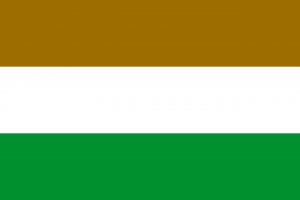Language/Xhosa/Vocabulary/Count-to-10
Hi Xhosa learners! 😊
In this lesson, you will learn how to count from 1 to 10 in Xhosa. Counting is a fundamental skill when learning a new language, and it is one of the first things you'll learn. Before we start, let's get to know Xhosa a little better.
Xhosa is a member of the Nguni language family, which is spoken in Southern Africa. It is the second most widely spoken Bantu language after Zulu. Xhosa is also known for its unique click consonant sounds, which are not present in most other languages. These clicks are represented by symbols such as '!' and 'ǂ' and produce a distinctive sound that is difficult to replicate outside of the language.
To improve your Xhosa Vocabulary, you can also use the Polyglot Club website. Find native speakers and ask them any questions!
Xhosa Numbers[edit | edit source]
In Xhosa, numbers follow a simple pattern and are relatively easy to learn. Here are the Xhosa numbers from 1 to 10:
| Xhosa | Pronunciation | English |
|---|---|---|
| kunye | koo-nye | one |
| kubili | koo-bee-lee | two |
| kuthathu | koo-taa-thoo | three |
| kune | koo-neh | four |
| kuyisi | koo-yi-see | five |
| kumzekelo | koo-m-zeh-keh-lo | six |
| kusixhenxe | koo-si-xhen-neh | seven |
| kude | koo-deh | eight |
| kumnandi | koo-m-nun-dee | nine |
| kunyaka | koo-nyaa-kah | ten |
How to pronounce Xhosa numbers[edit | edit source]
The pronunciation of Xhosa numbers can be tricky for some learners, but with practice, they can become easier to say. Xhosa is a tonal language, which means that the tone used to say a word can change its meaning. In Xhosa, there are three types of tones: high, mid, and low. It is important to get the tone right when saying a word to avoid confusion.
For example, the word "kunye," which means "one," is pronounced with a high tone on the "ku" syllable and a mid tone on the "nye" syllable. The word "kuthathu," which means "three," is pronounced with a high tone on the "ku" syllable, a mid tone on the "tha" syllable, and a low tone on the "thu" syllable. It may seem overwhelming, but as with any language, practice makes perfect.
Cultural Information[edit | edit source]
Xhosa is a rich and vibrant language that is deeply rooted in cultural traditions. It is a language woven into the rhythms of life, from music and dance to everyday conversation. For example, in Xhosa culture, people often greet each other by saying "Molo," which means "Hello" in Xhosa. This greeting is accompanied by a handshake or a nod of the head.
Another aspect of Xhosa culture is the initiation rites that young boys and girls go through to enter adulthood. One of the most well-known rituals is the circumcision ceremony, which is an ancient tradition that has been practised for centuries. Boys are circumcised as a symbol of their transition from boyhood to manhood, while girls undergo a coming-of-age ritual called "umgidi," which involves singing, dancing, and feasting.
Interesting Facts[edit | edit source]
- Nelson Mandela, the former President of South Africa and a global icon, was a native speaker of Xhosa.
- Xhosa is one of the eleven official languages of South Africa.
- The Xhosa word for "elephant" is "Indlovu," which is derived from the Zulu language.
- A group of Xhosa people is called "amaXhosa." The prefix "ama" is used to indicate a plural in Xhosa.
Sources[edit | edit source]
- Xhosa language - Wikipedia
- English to Xhosa Meaning of count - ukubala
- Xhosa numbers — Of Languages and Numbers
➡ If you have any questions, please ask them in the comments section below.
➡ Feel free to edit this wiki page if you think it can be improved. 😎
Videos[edit | edit source]
isiXhosa Counting song 10(a) - YouTube[edit | edit source]
Xhosa lessons COUNTING Siembamba preschool new - YouTube[edit | edit source]
Other Lessons[edit | edit source]
- Languages
- Clothes
- Express Surprise
- Education
- Days of the Week
- Fruits and Vegetables
- Family
- Feelings and Emotions
- Drinks

